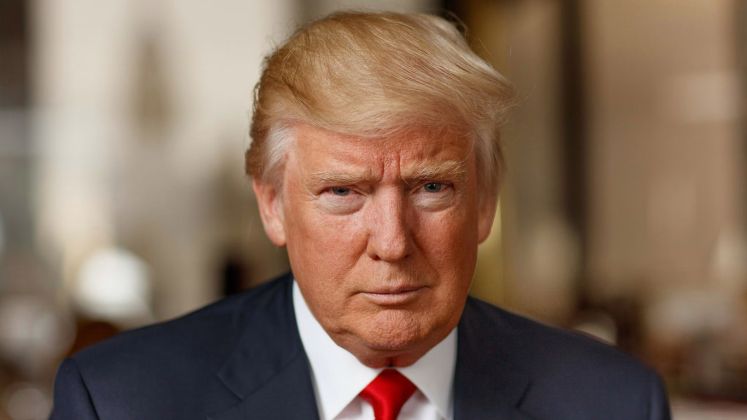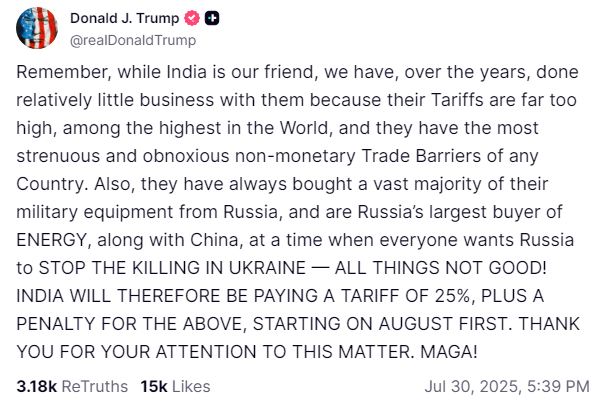
US President Donald Trump has announced 25% tariffs “plus a penalty” for India on Wednesday, just one day before his administration’s 1st August deadline to finalise agreements with its trading partners.
Trump said in a post on his platform Truth Social that America had “done relatively little business with India” because of their own protectionist measures over the years.
He did not, however, specify the precise nature of the “penalty” beyond the already declared 25% tariff. Earlier, in an effort to put economic pressure on Brics members, the US president had threatened to impose an additional 10% tariff on countries who continue to purchase Russian oil.
Despite months of discussions, a trade agreement between the US and India has not yet been finalised. Trump has been advocating for increased access to the Indian market for American products. In previous trade talks, he has frequently made similar requests. Officials from the two nations have held five rounds of negotiations, with a sixth round scheduled for the end of August when a US delegation visits India.
Trump had already alluded to the possibility of 20–25% tariffs on India because a trade agreement was still pending. Since negotiations are underway to finalise a bilateral trade agreement by autumn, Indian government officials have stated that any tariffs the US may impose starting on 1st August are probably just temporary in nature.
Meanwhile, Bangladesh has been subjected to a tariff of 35% on all imports into the US, while the Trump administration set tariffs for Vietnam at 20% for goods made in the country and 40% for products transshipped from countries like China. Thailand and Cambodia face the prospect of a 36% US tariff from 1st August. China itself has been subjected to a tariff of 30%. Currently, Indonesia is looking at a 19% tariff on imports into the US.
With Vietnam, Indonesia, and other Asian rivals facing somewhat lower prices, the revised tariffs could erode the competitiveness of Indian products.







